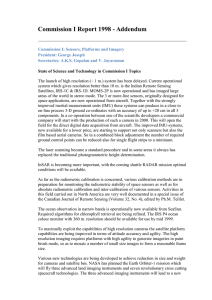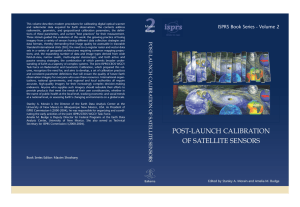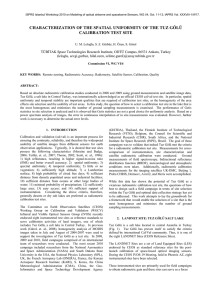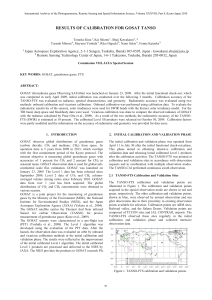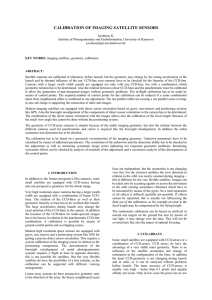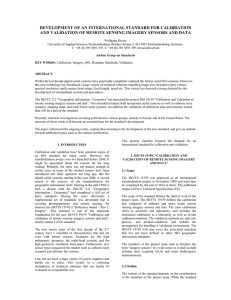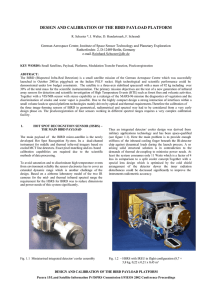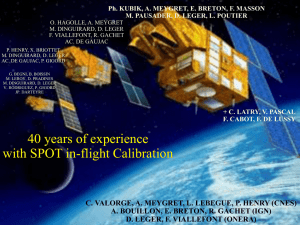TECHNICAL COMMISSION I: SENSORS, PLATFORMS AND IMAGERY and Calibration
advertisement
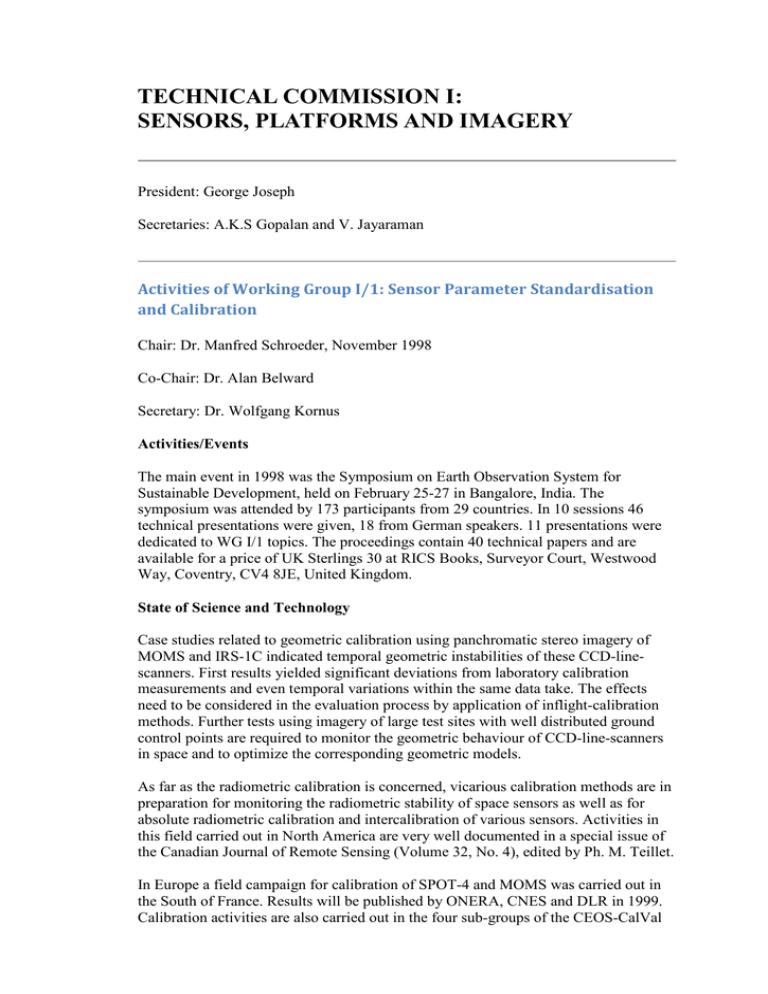
TECHNICAL COMMISSION I: SENSORS, PLATFORMS AND IMAGERY President: George Joseph Secretaries: A.K.S Gopalan and V. Jayaraman Activities of Working Group I/1: Sensor Parameter Standardisation and Calibration Chair: Dr. Manfred Schroeder, November 1998 Co-Chair: Dr. Alan Belward Secretary: Dr. Wolfgang Kornus Activities/Events The main event in 1998 was the Symposium on Earth Observation System for Sustainable Development, held on February 25-27 in Bangalore, India. The symposium was attended by 173 participants from 29 countries. In 10 sessions 46 technical presentations were given, 18 from German speakers. 11 presentations were dedicated to WG I/1 topics. The proceedings contain 40 technical papers and are available for a price of UK Sterlings 30 at RICS Books, Surveyor Court, Westwood Way, Coventry, CV4 8JE, United Kingdom. State of Science and Technology Case studies related to geometric calibration using panchromatic stereo imagery of MOMS and IRS-1C indicated temporal geometric instabilities of these CCD-linescanners. First results yielded significant deviations from laboratory calibration measurements and even temporal variations within the same data take. The effects need to be considered in the evaluation process by application of inflight-calibration methods. Further tests using imagery of large test sites with well distributed ground control points are required to monitor the geometric behaviour of CCD-line-scanners in space and to optimize the corresponding geometric models. As far as the radiometric calibration is concerned, vicarious calibration methods are in preparation for monitoring the radiometric stability of space sensors as well as for absolute radiometric calibration and intercalibration of various sensors. Activities in this field carried out in North America are very well documented in a special issue of the Canadian Journal of Remote Sensing (Volume 32, No. 4), edited by Ph. M. Teillet. In Europe a field campaign for calibration of SPOT-4 and MOMS was carried out in the South of France. Results will be published by ONERA, CNES and DLR in 1999. Calibration activities are also carried out in the four sub-groups of the CEOS-CalVal working group chaired by Alan Belward. Actual information on these investigations can be found under http://www.eos.co.uk/ceos-calval/docs/docs_index.htm News For 1999 a joint workshop of WG I/1 and WG I/4 together with WG IV/4 is planned on ‘Mapping from Space’ to be held in Hannover from September 27 - 30, 1999, Germany (Chairs: Dr. Schroeder, Dr. Jacobsen, Prof. Konecny). Another workshop on the topic of 'Inflight Geometric Characterization of Optical Imaging Systems' jointly organized by CNES, SFP, IGN in cooperation with ISPRS will be held in November 1999 in Bordeaux, France. WG I/5 Advanced Platforms and Sensors Chair: Takashi Moriyama Co-Chair: K. Tyagarajan News and Activities WG I/5 meetings were held in April, August and October. At the October meeting, held in Kyoto, Prof. Tateishi, Chair of ISPRS WGIV/6 was invited to discuss possible joint activities. State of Science and Technology (1) Earth Observation by Small Satellite The report titled "Survey of Small Earth Observation Satellites" was published and distributed to the ISPRS Commission I members. An additional survey has been done by WG I/5 members by attending related international/domestic conferences and symposiums. Revision of this report is underway. (2) Navigation and Positioning The new technology on GPS applications and Image Navigation have been studied. POS (Position and Orientation System) for Direct Georeferencing in airborne photogrammetry is one of the topics of interest to be focused on. The WG investigated POS/DG trends and its application. (3) Imaging Spectrometer Hyper Spectro Imager for Earth remote sensing has been studied. The WG specially focused on Land and Ocean application sensors based non-scanning solid state technology. (4) Smart Sensors Trends in on board processing technology have been studied. As the performance of the sensor rapidly improves, the concept of the smart sensor becomes much more complex. Our study is less active on this subject.
